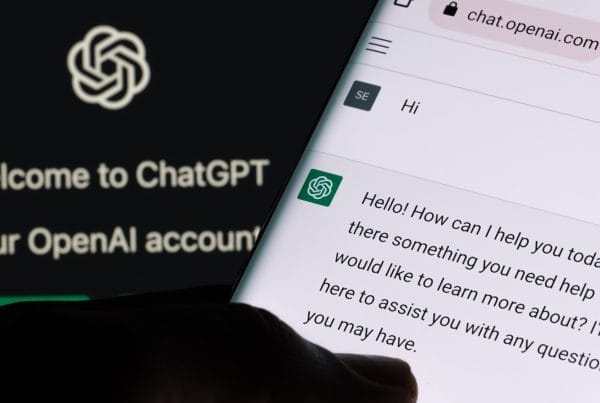Since the launch of ChatGPT, many students have been using an AI chatbot to either help them with their assignments or to write the whole thing for them.
Universities are using AI detectors as part of their toolkits to detect ChatGPT. They use tools such as Winston AI to see if the text that students present is their original work and not written by an AI tool.
Can Professors Tell If Students Are Using ChatGPT?
There are a few ways that professors can tell if students are using an AI tool like ChatGPT to do their work for them.
Professors know that students are using AI when:
- They check the text with an AI detector
- The text sounds generic and robotic
- Repetition in the text
The best way that professors at Universities can detect ChatGPT is by using an AI detector.
Let’s see how an AI detector works
How is ChatGPT Detected with an AI detector?
Universities around the world have used tools to see if students are cheating for many years.
Plagiarism (where students copy text from another text) has been a problem since the early days of the Internet. Online tools like Turnitin help professors to know if their students created the work themselves. We here at Winston AI also have a plagiarism tool to check if work was copied from somewhere online.
Since the launch of ChatGPT in November 2022, educators have a new problem. ChatGPT doesn’t just copy text from another source but uses Artificial Intelligence to create a new original text.
That’s why we created our AI detector Winston AI.
Winston AI can detect AI written text (like the text created by ChatGPT) with an accuracy rate of 99.98%.
Here is an example of a text that ChatGPT wrote:
As you can see the text is quite good and it might be difficult to tell if it was written by a machine or a human.
Well, let’s test it with Winston AI.
As you can see from the results, Winston correctly detected the text as 0% human.
Using a tool like Winston, professors can detect ChatGPT.
It is important to understand that the results show the probability of AI or human-written content.Sometimes you will receive a result like 75% AI. This does not mean that 75% of the text was written by AI. It means that the probability of the text being written by AI is 75%. You also need to use your judgement based on your interactions and knowledge about your students.
What are the Best AI Detectors?
So now you know how AI Detectors work you might want to know which AI detector is the best for your University.
Winston AI
Our AI content Detector is the most accurate detector on the market. With a 99.98% accuracy rate, you can trust that the detection tool works. Many free tools on the market do not work well and are easily tricked.
Turnitin
Turinitin have some great tools on its platform including an AI detector, plagiarism checker and Gradscope (an AI-assisted grading tool)
The difference between Turnitin and other AI detectors is accessibility. To use Turnitin, you need to apply as an educational institution whereas with Winston, you can just get started scanning documents now.
Copyleaks
Copyleaks is another tool that uses AI to detect AI content. Copyleaks plagiarism tool works well but their AI tool is easily tricked as you can read more about in our Copyleaks review.
What can Universities do to counteract students using ChatGPT?
Students using AI is a complicated issue so here are some suggestions about what Universities can do:
- Educate students about academic integrity and clearly define acceptable use of AI technology.
- Design assignments that require critical thinking, analysis, and original arguments that are difficult for AI to generate convincingly.
- Have students present their work and explain their process to the professor. Oral exams can help determine if the student understands the work.
- Require citations and bibliographies to evaluate sources and information used (AI tools often invent sources).
- Compare students’ current writing style and ability with past assignments for drastic changes that may indicate AI-generated content.
- Use Winston AI and other plagiarism detectors to check for plagiarism and AI.
- Update academic integrity policies to address use of AI generative models like ChatGPT.
- Educate professors on how to design assignments and test students in ways that minimize effectiveness of AI cheating.
- Stay up to date on developments in AI to understand new detection methods as technology evolves.
The Future of AI at University
Students have always found ways to use tools (or other people) to help them do their assignments.
AI tools are here to stay and students should be taught how to use these tools correctly and with integrity.
Critical thinking is the most important skill we should teach our students and continue to ask them why something is excellent.
We need to think about how students can become more productive and learn more at University with the help of AI while also maintaining academic integrity by checking for plagiarism and AI written work.
Final Thoughts
Universities are using AI detectors to detect ChatGPT. More of them will adopt this technology in the near future as many teachers are now using the tools without support from their educational institutions. This is simply because of how new this problem is.
If you are an educator, don’t be afraid to let your University know about tools like Winston AI to protect their academic integrity. They will value your insight and ability to keep up with fast-moving technology.



